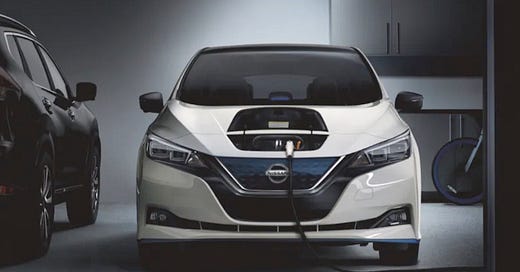Nissan and pals begin to put the EV pedal to the metal
A once-fractious alliance with Mitsubishi and Renault gets its act together.
(A native of England, Matthew Diebel is a veteran journalist who has worked at NBC News, Time, USA Today and News Corp., among other organizations. Having spent his childhood next to one of the world's fastest bodies of water, he is particularly interested in tidal energy.)
Do you know what all-electric car had the most global sales until it was overtaken by Tesla’s Model 3 in 2020? Probably not. It was the unassuming Nissan Leaf.
In fact, “probably not” is very much the overall impression many have of the Japanese manufacturer, which is in a three-pronged alliance with Mitsubishi (MSBHF) and France’s Renault (RNLSY). While Toyota (TM) vies with Volkswagen (VWAGY) as the world’s top-selling brand, Nissan (NSANY) lies at sixth (with sales of its partners bringing it up to fourth).
As the Leaf has demonstrated, Nissan is capable of producing top-selling vehicles, in large part because they are no-frills and competitively priced. But the alliance it belongs to has, until now, been somewhat slapshot in its attempts at integration and manufacturing efficiencies. For instance, the three automakers all have their own hybrid technologies with few shared key parts and systems.
Now, however, they seem to be getting their act together, having now developed four common EV platforms, Reuters reports. One underpins cars such as Nissan’s upcoming Ariya (to go on sale later this year) and Renault’s Megane EV, and another supports affordable no-frills autos by Nissan and its China market partner, Dongfeng (DNFGF). The other two are platforms for micro minis, called “kei cars” in Japan, and light commercial vehicles.
And a fifth platform is on the way that will be the base for an EV version of its popular Micra compact while Renault is developing an as-yet-unnamed EV based on the same underpinnings. They’re also working on shared batteries, something that will reduce costs for the most expensive electric car component.
The money spent on these developments so far — about $12 billion — is expected to almost double, sources told Reuters, with an announcement later this week of an additional $23 billion investment called Alliance to 2030 that will result in as many as 30 new models.
Is that a Nissan in your rearview mirror?



